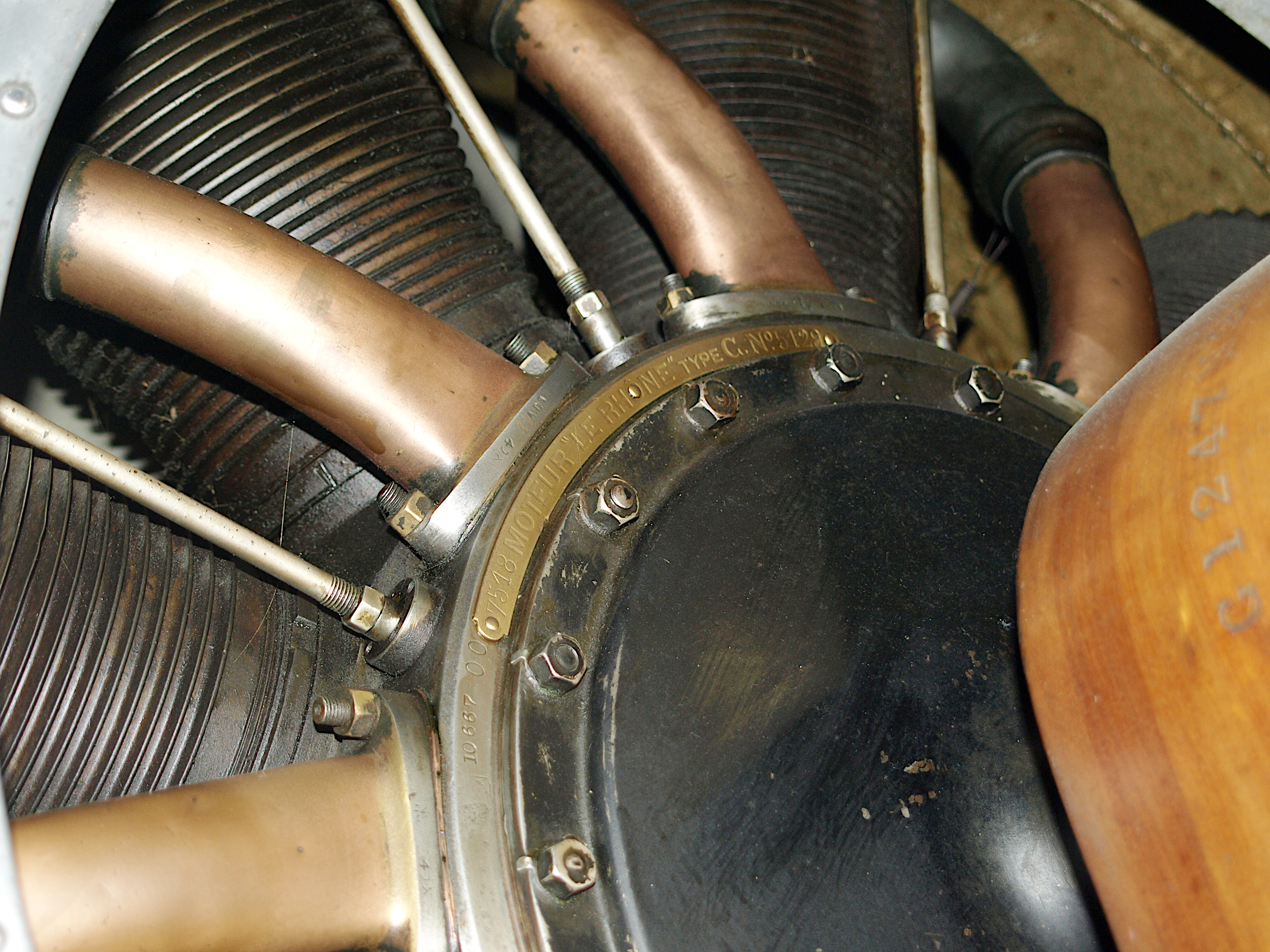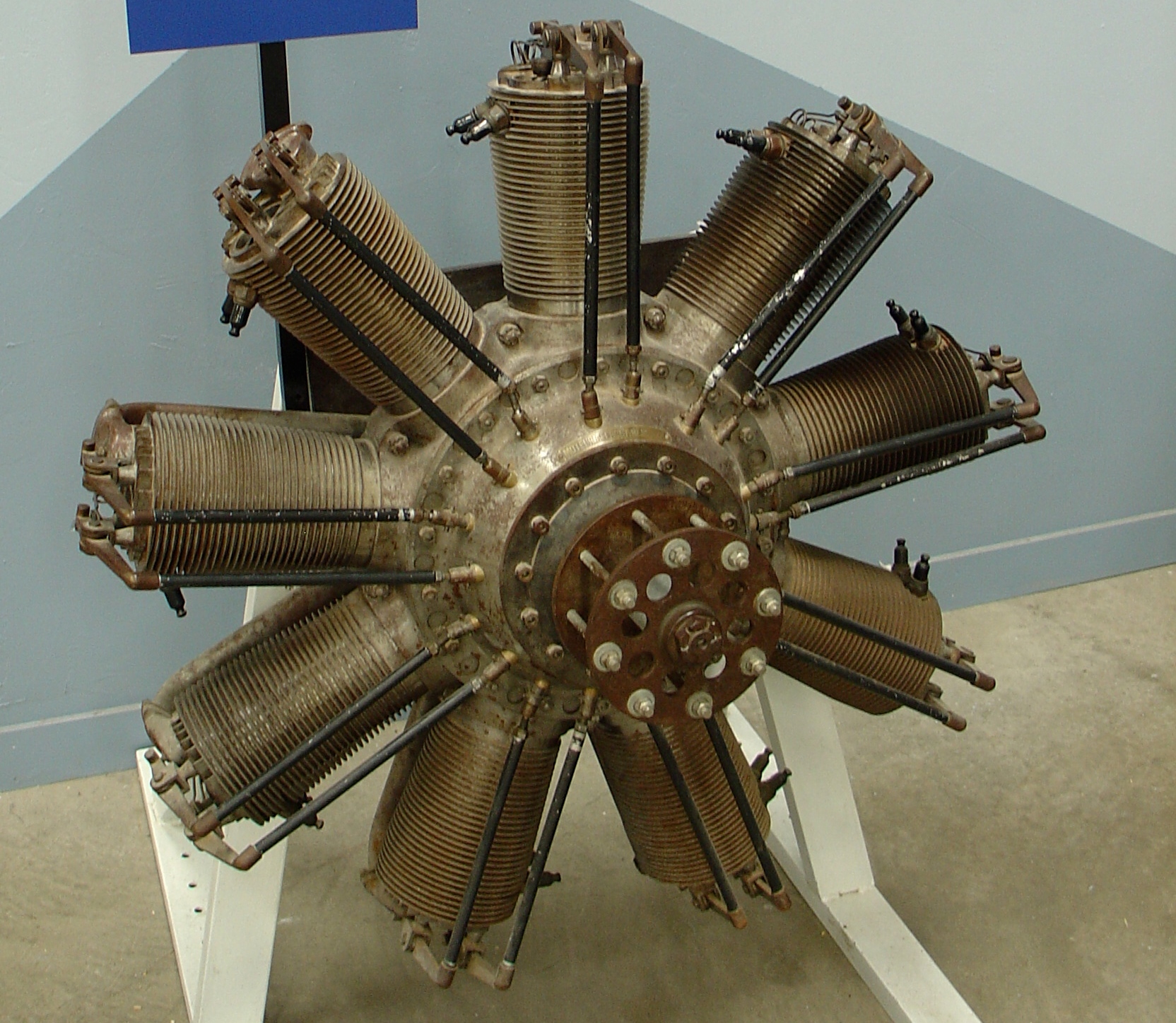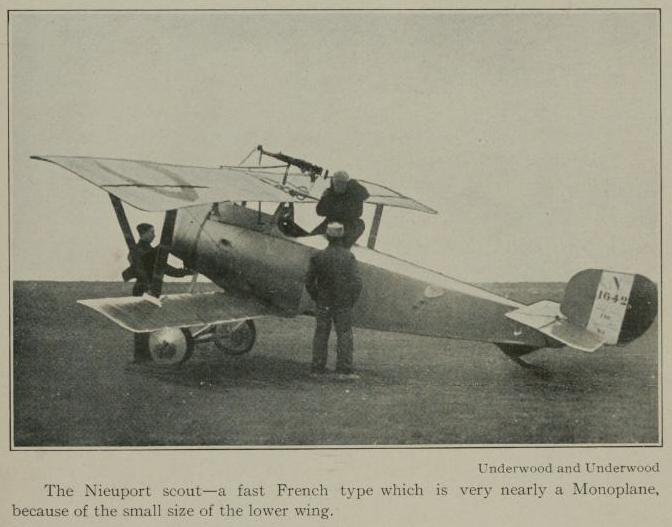|
Nieuport 12
The Nieuport 12 (or Nieuport XII in contemporary sources) was a French Biplane#Sesquiplane, sesquiplane reconnaissance, fighter aircraft and trainer used by France, Russia, United Kingdom, Great Britain and the United States during World War I. Later production examples were built as trainers and served widely until the late 1920s. Design and development To improve the performance of the Nieuport 10 a re-engined version was developed as the Nieuport 12 with a significantly enlarged upper wing. A Lewis gun was fitted to the rear cockpit for use by the observer, normally on an Etévé ring (known as the Nieuport ring in British service) although early examples used a pedestal mount or half ring. A second Lewis was sometimes fitted to fire over the top wing. Nieuport 12s built by William Beardmore and Company, Beardmore used by the Royal Flying Corps were sometimes fitted with a Scarff ring instead of the Nieuport ring, and a synchronization gear, synchronized Vickers gun for the pi ... [...More Info...] [...Related Items...] OR: [Wikipedia] [Google] [Baidu] |
WikiProject Aircraft
A WikiProject, or Wikiproject, is an affinity group for contributors with shared goals within the Wikimedia movement. WikiProjects are prevalent within the largest wiki, Wikipedia, and exist to varying degrees within Wikimedia project, sibling projects such as Wiktionary, Wikiquote, Wikidata, and Wikisource. They also exist in different languages, and translation of articles is a form of their collaboration. During the COVID-19 pandemic, CBS News noted the role of Wikipedia's WikiProject Medicine in maintaining the accuracy of articles related to the disease. Another WikiProject that has drawn attention is WikiProject Women Scientists, which was profiled by ''Smithsonian Magazine, Smithsonian'' for its efforts to improve coverage of women scientists which the profile noted had "helped increase the number of female scientists on Wikipedia from around 1,600 to over 5,000". On Wikipedia Some Wikipedia WikiProjects are substantial enough to engage in cooperative activities with outsi ... [...More Info...] [...Related Items...] OR: [Wikipedia] [Google] [Baidu] |
Scarff Ring
The Scarff ring was a type of machine gun mounting developed during the First World War by Warrant Officer (Gunner) F. W. Scarff of the Admiralty Air Department for use on two-seater aircraft. The mount incorporated bungee cord suspension in elevation to compensate for the weight of the gun, and allowed an airgunner in an open cockpit to swivel and elevate his weapon (a Lewis machine gun) quickly, and easily fire in any direction. Later models permitted the fitting of two Lewis guns; while this doubled the firepower available, operation of the paired guns was more cumbersome, and required considerable strength from the gunner, especially at altitude, so that many gunners preferred the original single gun - and this became the postwar standard. In either case, the mounting was simple and rugged, and gave its operator an excellent field of fire. It was widely adapted and copied for other airforces. As well as becoming a standard fitting in the British forces during the First Worl ... [...More Info...] [...Related Items...] OR: [Wikipedia] [Google] [Baidu] |
Argentine Naval Aviation
The Argentine Naval Aviation (', COAN) is the naval aviation branch of the Argentine Navy and one of its four operational commands. Argentina, along with Brazilian Navy, Brazil is one of two South American countries to have operated two aircraft carriers. The acronym ''CANA'' is often used in English language bibliographies, but is not correct Spanish usage. History Formation and World Wars COAN's origin can be traced to 22 October 1912 when a navy officer, Lt Melchor Escola, graduated as a pilot. On 11 February 1916 the naval air station school ''Fuerte Barragan'' was created near La Plata and the anniversary of this is marked as Naval Aviation Day. In September 1917 three naval lieutenants were sent to the US Naval Air Station Pensacola from which they were subsequently deployed to Europe to participate in World War I. COAN was officially established on 17 October 1919 as the Naval Air Service. Over the following years, the COAN operated a variety of aircraft, mainly advanc ... [...More Info...] [...Related Items...] OR: [Wikipedia] [Google] [Baidu] |
Nieuport 12 Aéronautique Militaire (2)
Nieuport, later Nieuport-Delage, was a French aeroplane company that primarily built racing aircraft before World War I and fighter aircraft during World War I and between the wars. History Beginnings Originally formed as Nieuport-Duplex in 1902 for the manufacture of engine components the company was reformed in 1909 as the Société Générale d'Aéro-locomotion, and its products were marketed to the aviation industry, including ignition components. During this time they built their first aircraft, a small single-seat pod and boom monoplane. This was destroyed shortly after having been flown successfully, during the Great Flood of Paris in 1909 . A second design flew before the end of 1909 and had the essential form of modern aircraft, including an enclosed fuselage with the pilot protected from the slipstream and a horizontal tail whose aerodynamic force acted downwards, balancing the weight of the engine ahead of the centre of gravity, as opposed to upwards as on contempo ... [...More Info...] [...Related Items...] OR: [Wikipedia] [Google] [Baidu] |
Wright-Bellanca WB-2
The Wright-Bellanca WB-2, was a high wing monoplane aircraft designed by Giuseppe Mario Bellanca, initially for Wright Aeronautical then later Columbia Aircraft Corp. Based on its all-wood forerunner, the Wright-Bellanca WB-1, only one was produced, variously named ''Columbia'', ''Miss Columbia'', and later ''Maple Leaf''. The WB was the second in a series of designs by Bellanca, following his prior fabric-covered all-wood CE biplane. Development In 1925, Clarence Duncan Chamberlin was friends with, and worked as chief test pilot for, the aircraft designer Giuseppe Mario Bellanca. A flight instructor in World War I, Chamberlin was an early customer of Bellanca designs, purchasing the only Bellanca CE, built when he was working for the Maryland Pressed Steel Company. Through Chamberlin, Bellanca secured a position as a consultant for the Wright Aeronautical company to produce a 5–6 passenger aircraft to demonstrate their new Wright Whirlwind J-4 engine. Bellan ... [...More Info...] [...Related Items...] OR: [Wikipedia] [Google] [Baidu] |
Le Rhône 9C
The Le Rhône 9C is a nine-cylinder Rotary engine, rotary aircraft engine produced in France by '' Société des Moteurs Le Rhône'' / Gnome et Rhône. Also known as the Le Rhône 80 hp in a reference to its nominal power rating, the engine was fitted to many military aircraft types during the World War I, First World War. Le Rhône 9C engines were also produced under license in Great Britain, the United States and Sweden. Design and development First marketed in 1912, the 80 horsepower 9C was the first of the Le Rhône, Rhône series rotary engines to have nine cylinders. In common with earlier seven cylinder Le Rhône series engines, the 9C featured copper Inlet manifold, induction pipes and used a single push-pull rod to operate its two Overhead valve, overhead valves. Unlike the later 110 horsepower 9J, the induction pipes and push rods were located on the front of the engine. Prior to the outbreak of World War One, aircraft powered by the Rhône 9C set nume ... [...More Info...] [...Related Items...] OR: [Wikipedia] [Google] [Baidu] |
Hispano-Suiza 8
The Hispano-Suiza 8 is a Internal combustion engine cooling, water-cooled V8 engine, V8 SOHC aero engine introduced by Hispano-Suiza in 1914 that went on to become the most commonly used liquid-cooled engine in the aircraft of the Entente Powers during the First World War. The original Hispano-Suiza 8A was rated at and the later, larger displacement Hispano-Suiza 8F reached . Hispano-Suiza 8 engines and variants produced by Hispano-Suiza and other companies under licence were built in twenty-one factories in Spain, France, Britain, Italy, and the U.S. Derivatives of the engine were also used abroad to power numerous aircraft types and the engine can be considered as the ancestor of another successful engine by the same designer, the Hispano-Suiza 12Y (and Soviet Klimov V12 derivative aero-engines) which was in service during the Second World War. Design and development Origins At the beginning of World War I, the production lines of the Barcelona based Hispano-Suiza automobil ... [...More Info...] [...Related Items...] OR: [Wikipedia] [Google] [Baidu] |
Clerget 9Z
Clerget was the name given to a series of early rotary aircraft engine types of the World War I era that were designed by Pierre Clerget( fr). Manufactured in France by Clerget-Blin and in Great Britain by Gwynnes Limited they were used on such aircraft as the Sopwith Camel and Vickers Gunbus. In the 1920s Pierre Clerget turned his attention to diesel radial engines and finally produced a H-16 engine before he died in 1943. Rotary engine development (spark ignition) What distinguished the Clerget rotary engine from its rivals (Gnome and Le Rhône) was that the Clerget had normal intake and exhaust valves unlike the Gnome, and the connecting rod arrangement was much simpler than the Le Rhone. A source of failure among the Clerget engines were the special-purpose piston rings, called obturator rings. These were located below the gudgeon or wrist pin, to block heat transfer from the combustion area to the lower part of the cylinder and overcome their subsequent distortion. ... [...More Info...] [...Related Items...] OR: [Wikipedia] [Google] [Baidu] |
Nieuport 12bis C
Nieuport, later Nieuport-Delage, was a French aeroplane company that primarily built racing aircraft before World War I and fighter aircraft during World War I and between the wars. History Beginnings Originally formed as Nieuport-Duplex in 1902 for the manufacture of engine components the company was reformed in 1909 as the Société Générale d'Aéro-locomotion, and its products were marketed to the aviation industry, including ignition components. During this time they built their first aircraft, a small single-seat pod and boom monoplane. This was destroyed shortly after having been flown successfully, during the Great Flood of Paris in 1909 . A second design flew before the end of 1909 and had the essential form of modern aircraft, including an enclosed fuselage with the pilot protected from the slipstream and a horizontal tail whose aerodynamic force acted downwards, balancing the weight of the engine ahead of the centre of gravity, as opposed to upwards as on contempo ... [...More Info...] [...Related Items...] OR: [Wikipedia] [Google] [Baidu] |
French Nieuport 12bis Of Escadrille N69 At The Somme (cropped)
French may refer to: * Something of, from, or related to France ** French language, which originated in France ** French people, a nation and ethnic group ** French cuisine, cooking traditions and practices Arts and media * The French (band), a British rock band * "French" (episode), a live-action episode of ''The Super Mario Bros. Super Show!'' * ''Française'' (film), a 2008 film * French Stewart (born 1964), American actor Other uses * French (surname), a surname (including a list of people with the name) * French (tunic), a type of military jacket or tunic * French's, an American brand of mustard condiment * French (catheter scale), a unit of measurement * French Defence, a chess opening * French kiss, a type of kiss See also * France (other) * Franch, a surname * French Revolution (other) * French River (other), several rivers and other places * Frenching (other) Frenching may refer to: * Frenching (automobile), recessing or moul ... [...More Info...] [...Related Items...] OR: [Wikipedia] [Google] [Baidu] |
Le Rhône 9J
The Le Rhône 9J is a nine-cylinder Rotary engine, rotary aircraft engine produced in France by Gnome et Rhône. Also known as the Le Rhône 110 hp in a reference to its nominal power rating, the engine was fitted to a number of military aircraft types of the World War I, First World War. Le Rhône 9J engines were produced under license in Great Britain by W. H. Allen, Sons & Company Ltd., W.H. Allen Son & Company of Bedford, and in Germany by Motorenfabrik Oberursel where it was sold as the Oberursel Ur.II.Lumsden 2003, p. 161. In common with other Le Rhône series engines, the 9J featured highly visible copper Inlet manifold, induction pipes and used a single push-pull rod to operate its two overhead valves. The main visual difference between the 9J and the earlier, less powerful Le Rhône 9C engine is that the copper intake manifold tubing (with round section lower ends) on the 110 hp 9J is attached to the crankcase behind the cylinders, whereas on the 9C (8 ... [...More Info...] [...Related Items...] OR: [Wikipedia] [Google] [Baidu] |






